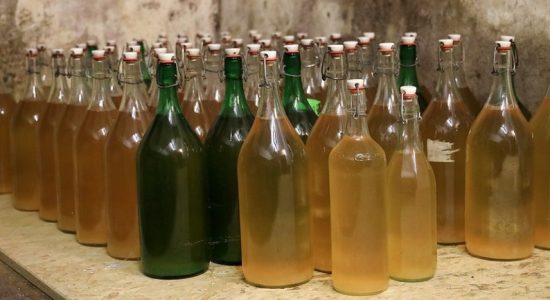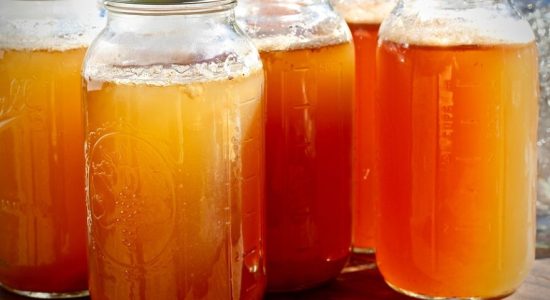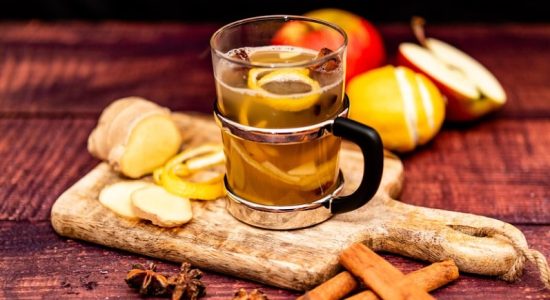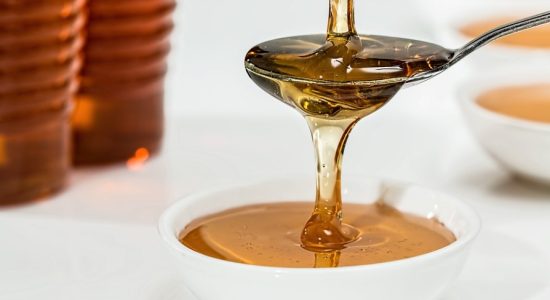Mead Without Yeast – How To Ferment Mead Without Yeast
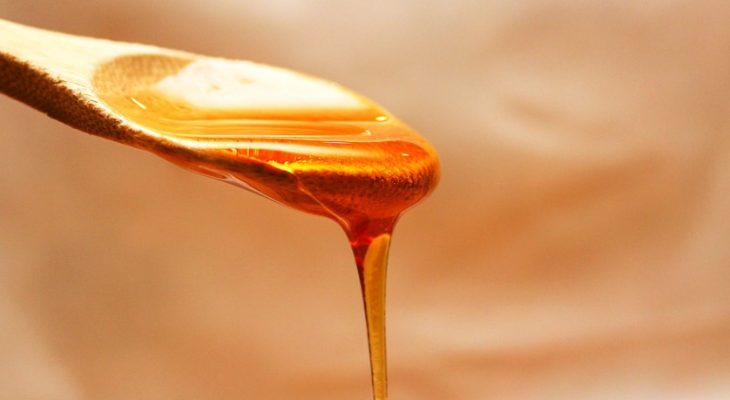
Mead is one of the oldest and simplest types of alcohol to make because you only need water, honey, and yeast. But can you simplify it further and take the yeast out of the equation?
You cannot make mead entirely without yeast, but you don’t have to use commercial yeast. Instead, you’ll rely on natural or wild yeast in fruits and honey. For the long term, you can regularly use a stirring spoon or fermentation vessel where the yeast can accumulate.
Technically speaking, there’s still yeast in this mead recipe. However, it’s different from what you get at markets, and this article will help you see why it still works.
How To Make Mead Without Yeast
Making mead is straightforward, and that’s why I even dared to it’s the easiest alcohol to make.
It’s perfect for beginners: no fancy equipment, few ingredients, and comprehensive procedures.
From my basic one-gallon mead recipe, you only need the following:
- Filtered water
- Honey
- Wine or mead yeast
If you want to make mead traditionally, you won’t use commercial yeast. After all, ready-made yeast was not available in ancient times, yet olden feasts were flooded with mead.
For this method, you’ll use wild yeast from organic raisins, honey, and other fruits. These natural yeast sources also provide tannins and other nutrients.
If you’re interested in honey-flavored drinks in general, you’ll want to check out this article for the best honey beer you’ll ever make.
Ingredients (Yields One Gallon of Mead)
- 2-3 lbs (0.91-1.36 kg) of honey (local, raw, and unpasteurized)
- 1 gallon (3.79 L or 128 oz) of water (spring, distilled, or purified)
- 3 to 5 organic raisins
- 1 to 2 teaspoons of lemon or orange juice
Notes:
- You can adjust the amount of honey based on your preferred sweetness. For sweeter mead, add more of it and vice versa.
- Avoid using chlorinated or tap water. If you have to, boil it or let the chlorine evaporate overnight before use.
Equipment
- Wide-mouthed fermenter/fermentation vessel (ceramic, glass, or food-grade plastic)
- Stirring spoon
- Cheesecloth
- String/rubber band
Optional equipment (for long-term fermentation)
- Carboy
- Air lock
- Bung
- Racking siphon
- Bottles
Directions
- Clean and sanitize equipment using unscented detergents, commercial sanitizers, or no-rinse cleaners. If you want to repeatedly make mead without commercial yeast, you should use no-rinse cleaners to avoid killing the yeast in your equipment and allow them to accumulate for subsequent batches.
- Mix honey and water. Use a wide-mouthed container to hold the mixture. Also, do not boil the honey as it kills any wild yeast present, which you absolutely need for this to work.
- Add wild yeast source (organic raisins) and juice. You can add flavor and fermentation enhancers at this stage. You can also add yeast nutrients for better and quicker fermentation.
- Keep the mixture in a warm, dark room. After adding the raisins, fermentation will begin, and the mixture should be kept in a room at 60 – 80°F (15 – 27°C). Wild yeast fermentation takes 3 to 4 days.
- Stir the mixture 2 to 3 times daily. During the fermentation period, you’ll have to keep stirring to incorporate wild yeast in the mixture and prevent unwanted bacteria from settling. Cover with a cheesecloth when not mixing.
- Taste. After a few days, your mead will typically be ready for consumption. So, taste it, and if you’re satisfied, enjoy it! But if not, you can proceed to the next step.
- Rack or transfer mead into a carboy with an airlock. An air-tight container is essential for a longer fermentation. For easy racking, you can use a siphoning tube.
- Bottle and age. Aging mead can take three months to a year. Bottle it after aging but only do so after the airlock stops bubbling, or else you might be risking an explosion. You can also see my article 10 Essential Tips for Bottling Homebrew for advice and equipment for bottling.
Note:
If you choose not to age your mead, expect it to taste sweeter and have less alcohol. Also, if you’re not familiar with airlocks, watch this video first:
https://www.youtube.com/watch?v=IDQ4FOdLRqI&t=1s
What Flavorings Can You Use for Mead Without Yeast?
The recipe above is plain – just honey, raisins, water, and lemon juice. But that’s not the only way to enjoy mead with this method because you can add a lot more flavoring to perfect your brew.
Some flavorings used to improve mead (even without commercial yeast) are:
- Fruits
- Herbs
- Spices
- Tree bark
- Black tea
- Berries
- Edible flowers
- Vegetables
There’s even a recipe for making garlic mushroom cooking mead that calls for the following ingredients:
- Honey
- Water
- Garlic
- Fresh shiitake mushrooms or mushroom tea
- Raisins
- Wild yeast
If you add flavorings, it’s best to use natural or organic ones to ensure they’re free of pesticides.
What Are Yeast Logs?
When discussing making mead traditionally, it’s always the best time to introduce the concept of yeast logs.
During ancient times, people had no concept of commercial-grade yeast or microorganisms. However, they believed in magic and totem sticks, which extended to mead-making.
People would drop dried sticks into the mead mixture and call them yeast logs, magic totems, or magic fermenting wands. This particular stick would be passed on from one mead batch to another.
Unbeknownst to them, these logs collected wild yeast, so every time it was transferred, it brought more yeast to the mixture. This accelerates and improves the fermentation process.
These yeast logs were so unique they were even passed down as heirlooms. So, if you’re planning to make wild yeast mead for a long time, you can use a stirring spoon as your yeast log
Let the spoon sit in the fermenting mixture, and allow the yeast to accumulate for better mead in subsequent batches.
Final Thoughts
You cannot make mead without yeast. If you did, you’d simply end up with a flat mixture of water and whatever additives you use.
Traditionally, mead was still made with yeast but not the commercial yeast we are familiar with today. Instead, people relied on the wild yeast from the air, fruits, and even honey to allow the fermentation process.
If you are interested in other ways alcohol can be made without commercial yeast, you can read my article: Make Alcohol Without Yeast? (3 Natural Substitutes For Yeast).



